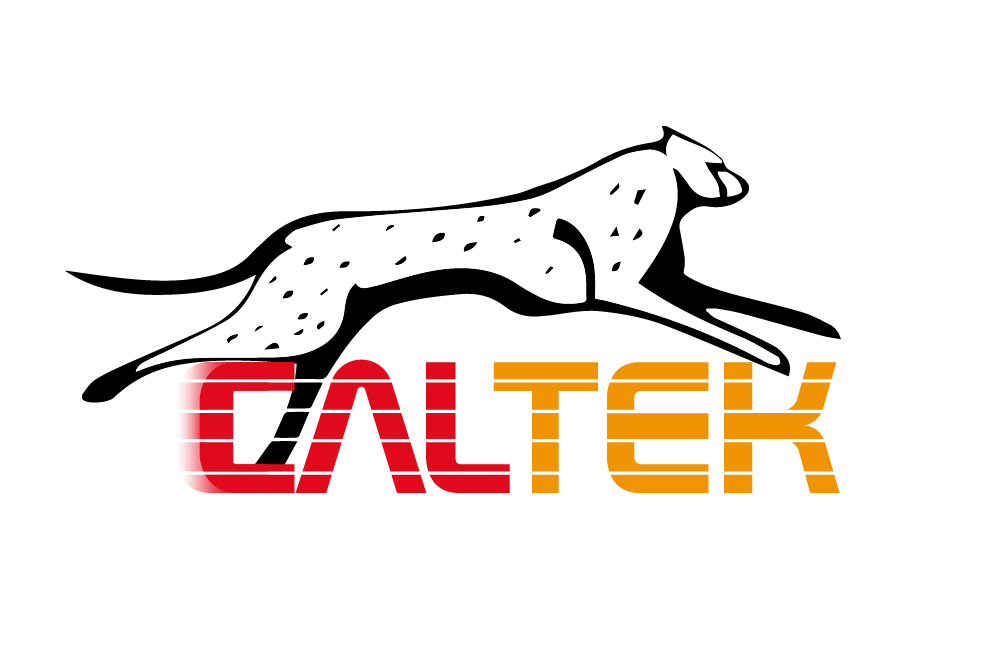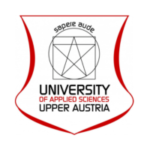The work plan strives to maximise the efficiency of all activities carried out in the project and their impact. To this end, it is organised in a way that ensures a synergistic cohesion between related tasks but, at the same time, presents opportunities for concurrency. The project formerly had a duration of 42 months and was extended to 45 months until the end of September 2024. All deliverables will be shifted by 3 months. The workload is divided into 9 work packages (WPs); one (WP2) concerned with requirements/specifications on interaction and productivity aspects, 5 technical WPs (WP3-WP8), as well as 2 non-technical WPs devoted to coordination & management (WP1) and dissemination, communication, exploitation and long-term sustainability (WP9).


The main objective of WP1 is to coordinate all management activities across the consortium. WP1 is supported by the management structure. In particular, it will address the following objectives:
- Implement and maintain an effective management infrastructure for monitoring and controlling progress.
- Supervise the technical progress of the project and take appropriate actions if needed.
- Implement procedures for quality management.
- Oversee and coordinate ethical and privacy issues.
- Ensure proper knowledge management including handling of IPR.
- Establish and maintain effective communication between project partners and the EC on the status of the project,including financial reports and all documentation required to meet the grant requirements.
Deliverables
D1.1: Quality assurance plan, (Lead: FHOOE; Due: M03; R[T1.2]; CO)
D1.2: Data management plan, (Lead: ICCS; Due: M06; ORDP[T1.1]; PU)
D1.3: Ethics and privacy manual, (Lead: EUN; Due: M06; R[T1.3]; CO)
D1.4: Innovation management plan, (Lead: CRF; Due: M06; R[T1.4]; PU)
D1.5: Report on comulative expenditure incurred until 2021, (Lead: ICCS; Due: M13; R[T1.1]; CO)
D1.6: Report on comulative expenditure incurred until 2022, (Lead: ICCS; Due: M25; R[T1.1]; CO)
D1.7: Report on comulative expenditure incurred until 2023, (Lead: ICCS; Due: M40; R[T1.1]; CO)

The main purpose of this WP is to prepare the ground for the R&D tasks and formalise FELICE framework. It will analyse and define the respective user- and task-related ergonomics, safety and productivity requirements for human-centred joint performance design for the local and global system layers, as well as the layer interdependencies. Moreover, the specifications for the robotic platform, system architecture and the IoT ecosystem are derived. Results in this WP will also drive R&D activities during the different phases of the project. In summary, the objectives are:
- Definition of safety requirements as well as aspects of resilient performance for the local and the global layer.
- Definition of ergonomic (physical and cognitive) requirements for human-centred system design (adaptive work-stations and interface design).
- Definition of requirements for joint activity for single workstation HR units (local layer) and for joint activity of ahigher-level supervisor entity (global layer) that actively monitors and steers the overall workflow process.
- Definition of productivity aspects affected by the planned innovation.
- Specifications of the system architecture and the IoT ecosystem
Deliverables
D2.1: Robot, architecture and system specifications I, (Lead: ACC; Due: M06; R[T2.1, T2.5]; CO)
D2.2: System interaction requirements I, (Lead: IFADO; Due: M09; R[T2.2, T2.3]; CO)
D2.3: Productivity specifications I, (Lead: CRF; Due: M09; R[T2.4]; CO)
D2.4: Robot, architecture and system specifications II, (Lead: AEGIS; Due: M29; R[T2.1, T2.5]; CO)
D2.5: System interaction requirements II, (Lead: IML; Due: M29; R[T2.2, T2.3]; CO)
D2.6: Productivity specifications II, (Lead: CRF; Due: M29; R[T2.4]; CO)
D2.7: FELICE framework specifications, (Lead: IFADO; Due: M46; R[T2.1-T2.5]; PU)

The objectives of this WP are:
- Identify and prepare a roadmap for tackling the research challenges.
- Design and implement the security and privacy mechanisms of the platform.
- Determine knowledge structuring formats and information to be preserved and shared across platform components.
- Implement and manage a knowledge base that stores derived knowledge and offers secure access mechanisms.
- Develop interfaces and visualisations to relay project results to the end-users following a user-centered approach.
Deliverables
D3.1: State of the art report, (Lead: UNISA; Due: M06; R[T3.1]; PU)
D3.2: System enablers I, (Lead: AEGIS; Due: M19; R+OTH[T3.2-T3.4]; CO)
D3.3: System enablers II, (Lead: FORTH; Due: M33; R+OTH[T3.2-T3.4]; CO)
D3.4: FELICE system enablers, (Lead: AEGIS; Due: M45; R+OTH[T3.2-T3.4]; PU)

This WP will develop perception mechanisms which will process and fuse data provided by multiple and heteroge- neous sensors for building a representation of actors and objects in the assembly shop floor. Its objectives are:
- Detect and estimate the 6D pose of objects with challenging appearance.
- Build a spatial representation of the environment, suitable for navigating and pinpointing of objects of interest.
- Detect humans and identify their actions, behavior and intentions.
- Identify spoken commands and gestures.
Deliverables
D4.1: Perception mechanisms I, (Lead: ICCS; Due: M19; R+OTH[T4.1-T4.4]; CO)
D4.2: Perception mechanisms II, (Lead: FORTH; Due: M33; R+OTH[T4.1-T4.4]; CO)
D4.3: FELICE Perception mechanisms, (Lead: ICCS; Due: M46; R+OTH[T4.1-T4.4]; PU)

This WP regards the development of hardware platforms and the synergetic execution of assembly tasks. It deals with the construction of the cognitive robot and the adaptive workstation considering safety, productivity and ergonomic issues, the programming of the robot to develop a set of robust and re-usable actions and the consideration of the temporal aspects of human-robot collaboration. The objectives of this WP are to:
- Develop and set-up the cognitive robot and the adaptive workstation.
- Develop a behavioral repertoire to facilitate robot task re-programming.
- Enhance fluent human-robot collaboration in various assembly tasks and multiple workstations.
Deliverables
D5.1: Robotic hardware and adaptive workstation I, (Lead: ACC; Due: M11; DEM+R[T5.1,T5.2]; CO)
D5.2: Robot task execution and human-robot fluency I, (Lead: PRO; Due: M19; R+OTH[T5.3,T5.4]; CO)
D5.3: Robotic hardware and adaptive workstation II, (Lead: TUD; Due: M29; DEM+R[T5.1,T5.2]; CO)
D5.4: Robot task execution and human-robot fluency II, (Lead: FORTH; Due: M33; R+OTH[T5.3,T5.4]; CO)
D5.5: FELICE cognitive robot and adaptive workstation, (Lead: PRO; Due: M46; DEM+R[T5.1-T5.4]; CO)

The WP6 will define Digital Twin models to support decision-making on production resources, including know-how relating to the technical areas. The WP6 objectives can be summarized as follows:
- Design and implement Digital Twin models of both machines/equipment and operators;
- Use the Digital Twin models to support real-time decisions and to carry-out what-if analysis and experimentations;
- Ensure Digital Twin quality assurance through a specific Verification & Validation (V&V) process;
- Provide feedbacks on the strategies of the assembly processes management.
Deliverables
D6.1: Digital Twin models and executable Implementation I, (Lead: CALTEK; Due: M19; R+OTH[T6.1]; CO)
D6.2: VV&A activities and feedback strategy management I, (Lead: FHOOE; Due: M19; R[T6.2, T6.3]; CO)
D6.3: Digital Twin models and executable Implementation II, (Lead: CALTEK; Due: M33; R+OTH[T6.1]; CO)
D6.4: VV&A activities and feedback strategy management II, (Lead: FHOOE; Due: M33; R[T6.2, T6.3]; CO)
D6.5: FELICE production process digital twin, (Lead: CALTEK; Due: M48; R+OTH[T6.1-T6.3]; CO)

This WP will maximize productivity and ergonomics via workspace adaptations. Its main objectives are to:
- Create methods to model human performance and improve workplace ergonomics by adapting workspaces.
- Devise methods to improve resilience in the assembly line and mitigate the effects of errors and faults.
- Develop methods for orchestrating the effective human-robot collaboration, enhancing the system’s adaptivitywhile reducing the physical and mental stress of the human worker.
- Create an AI-enhanced system aiming to control global parameters and maximize productivity and ergonomics.
Deliverables
D7.1: Intelligent manufacturing execution system I, (Lead: IML; Due: M19; R+OTH[T7.1-T7.3]; CO)
D7.2: Intelligent manufacturing execution system II, (Lead: IML; Due: M33; R+OTH[T7.1-T7.3]; CO)
D7.3: FELICE Intelligent manufacturing execution system, (Lead: FHOOE; Due: M48; R+OTH[T7.3]; PU)

This WP integrates the technologies developed in R&D WPs (WP3-7) into the FELICE system. The latter is evaluated to feed new development rounds that will incorporate the evaluation outcomes. The objectives of the WP are:
- Detailed definition of use case and scenarios based on the pilot characteristics and requirements.
- Definition of the integration and evaluation strategy.
- Provision of the integrated framework and validation of the technology under realistic experiments.
- Exploitation of feedback gained by verification tests to fine-tune the modules and the system.
- Feasibility evaluation of the FELICE system for supporting Human Robot collaborative assembly.
Deliverables
D8.1: Use cases and pilot evaluation strategy, (Lead: IFADO; Due: M08; R[T8.1]; CO)
D8.2: Integration strategy, (Lead: AEGIS; Due: M11; R[T8.2]; CO)
D8.3: FELICE integrated prototype I, (Lead: CALTEK; Due: M21; DEM+R[T8.3]; CO)
D8.4: Pilot execution and evaluation I, (Lead: CRF; Due: M25; R[T8.4]; CO)
D8.5: FELICE integrated prototype II, (Lead: CALTEK; Due: M38; DEM+R[T8.3]; CO)
D8.6: Pilot execution and evaluation II, (Lead: CRF; Due: M42; R[T8.1, T8.4]; PU)

This WP will ensure wide dissemination and communication of the project results and will prepare roll-out activities after the successful conclusion of the project. More specifically, its main objectives are to:
- Disseminate the project concept, developments and findings to possible stakeholders (i.e. industry, academia, public authorities, etc.) and identify market opportunities using effective communication strategies.
- Contribute to the research community with research results in top-tier scientific conferences and journals.
- Participate in relevant, both scientific as well as industrial, European and worldwide events (such as workshops, seminars, conferences, etc.) with the overarching goal to showcase the results of FELICE and set the ground for asuccessful commercial and scientific exploitation of the project results.
- Establish cooperation with other relevant EU-funded projects and DIHs, as well as with other relevant frameworks.
Deliverables
D9.1: Project website and visual identity, (Lead: UNISA; Due: M02; R[T9.1]; PU)
D9.2: Dissemination and exploitation plan, (Lead: TUD; Due: M06; R[T9.1-T9.4]; PU)
D9.3: Dissemination, exploitation, standardisation activities report and impact assessment I, (Lead: CRF; Due: M25; R[T9.1-T9.4]; PU)
D9.4: Dissemination, exploitation, standardisation activities report and impact assessment II, (Lead: IML; Due: M42; R[T9.1-T9.4]; PU)
D9.5: FELICE exploitation plan and long-term sustainability, (Lead: TUD; Due: M48; R[T9.1-T9.4]; PU)

This WP will ensure the compliance with the ‘ethics requirements’.
Deliverables
D10.1: GEN – Requirement No. 1, (Lead: ICCS; Due: M6; CO)

